Minnesota
PIPESTONE
Leaving Omaha and driving to Southwest Minnesota took me through four states since both locations are close to state borders. I arrived for a two-week stay at Pipestone RV Campground on the outskirts of the town of Pipestone and directly across the street from Pipestone National Monument. The national monument offered a paved walking path through fields of wildflowers and past cliffs of red Sioux Quartzite and pipestone, ending at a pretty waterfall.
Pipestone (catlinite) is a soft, dark red stone that is easy to carve and can tolerate very high temperatures, making it perfect for ceremonial Indian peace pipes. Indians have quarried the stone for centuries and only recognized tribes are permitted to quarry it today. The Sioux Quartzite is used in construction and most of the buildings in town use it on their façades.
Minnesota is known as the “Land of 10,000 Lakes” and if you look at a satellite map, it looks like Swiss cheese filled with water. There are actually more than 11,000 lakes that are larger than 10 acres in size. Consequently, it’s very humid here and this summer it was unusually hot like so much of the country.
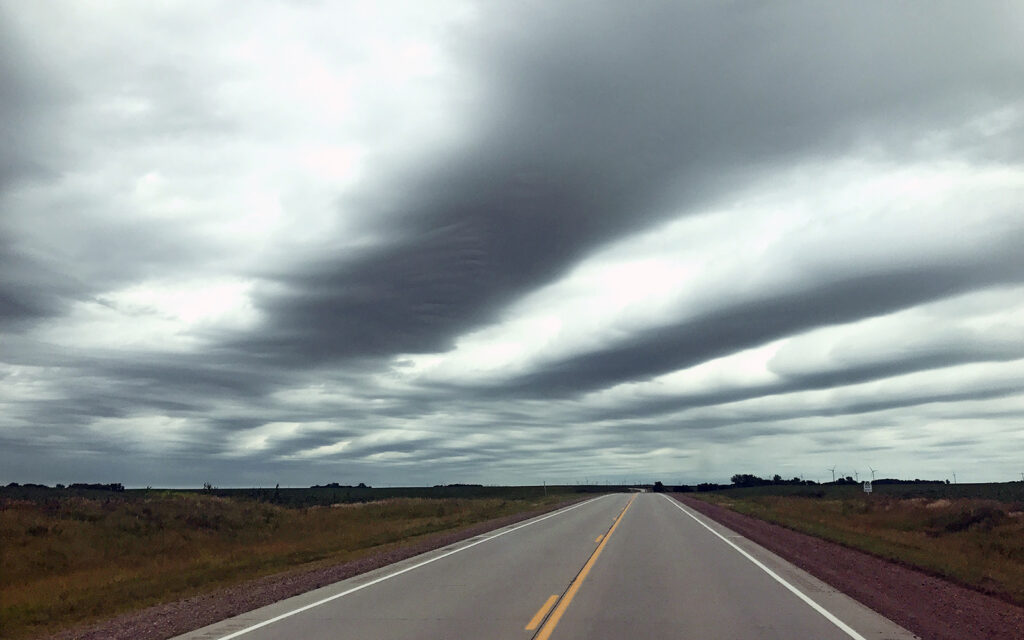
Interesting clouds as I entered Minnesota.
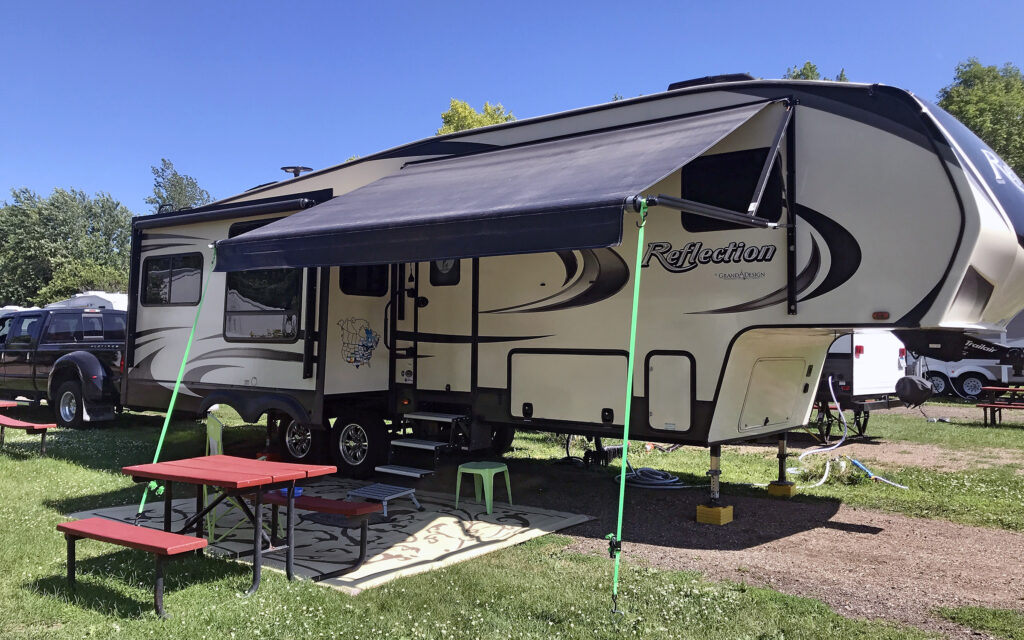
My campsite at Pipestone RV Campground.
Pipestone National Monument
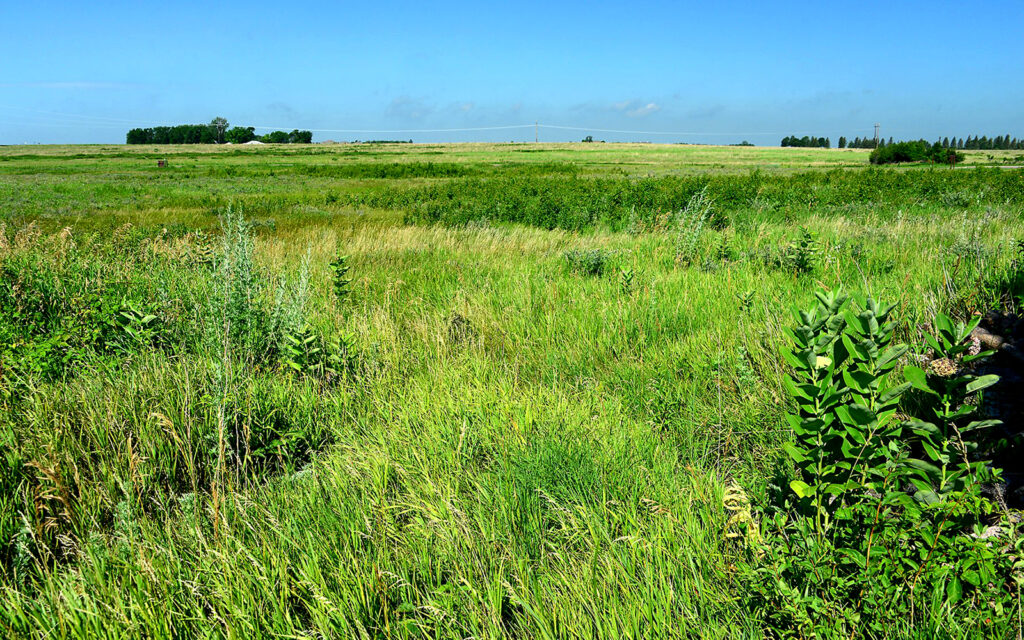
Eastern prairie grassland at Pipestone National Monument.
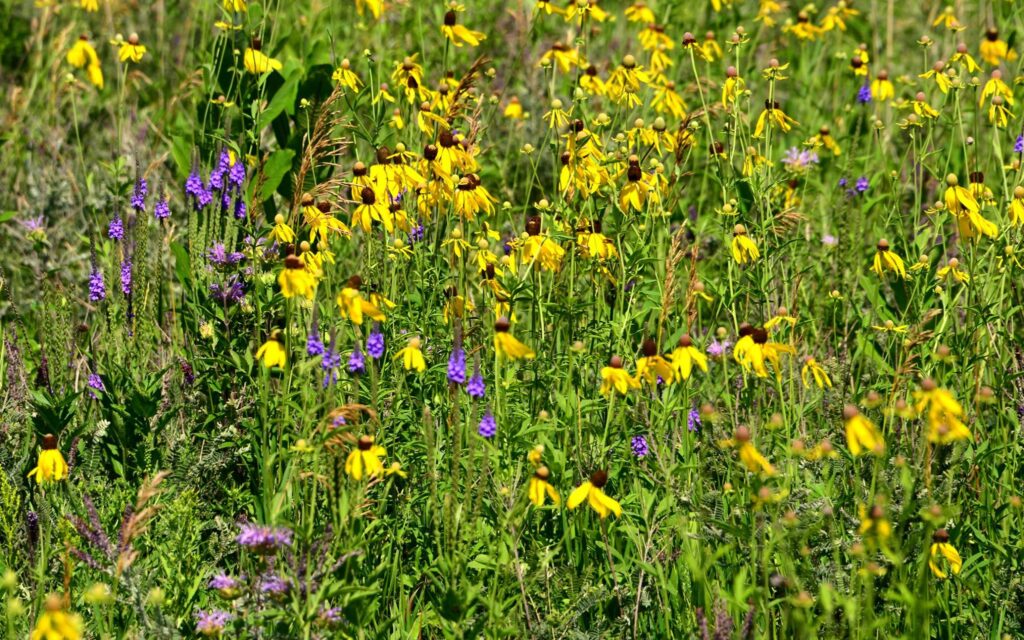
Wildflowers at Pipestone National Monument.
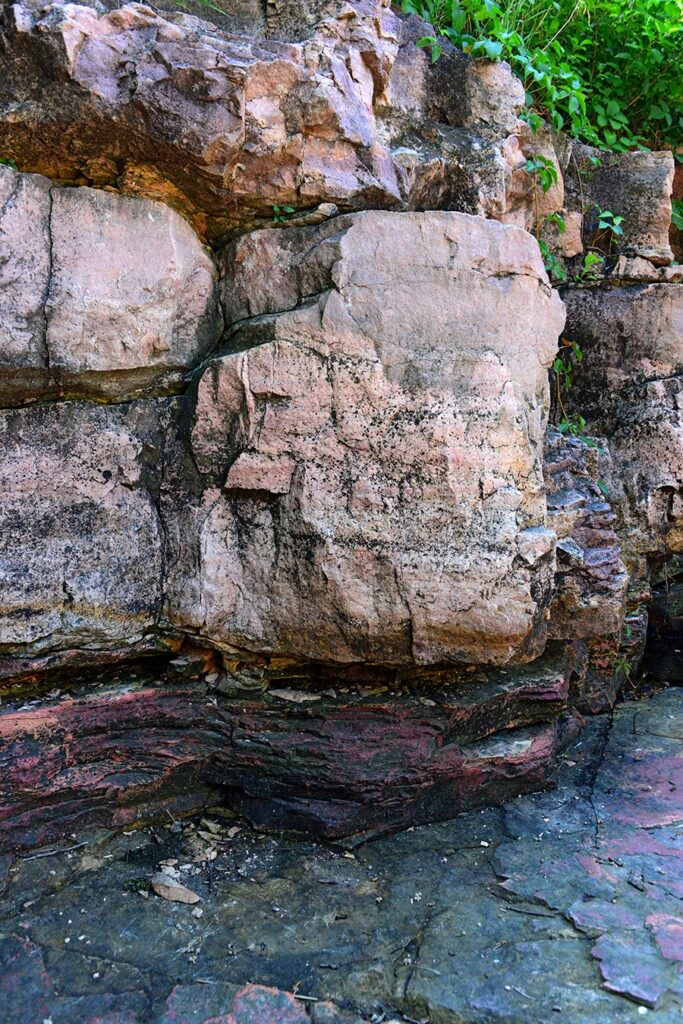
This quarry exhibit shows ten feet of red quartzite above the one foot layer of pipestone—the dark red layer at the bottom.
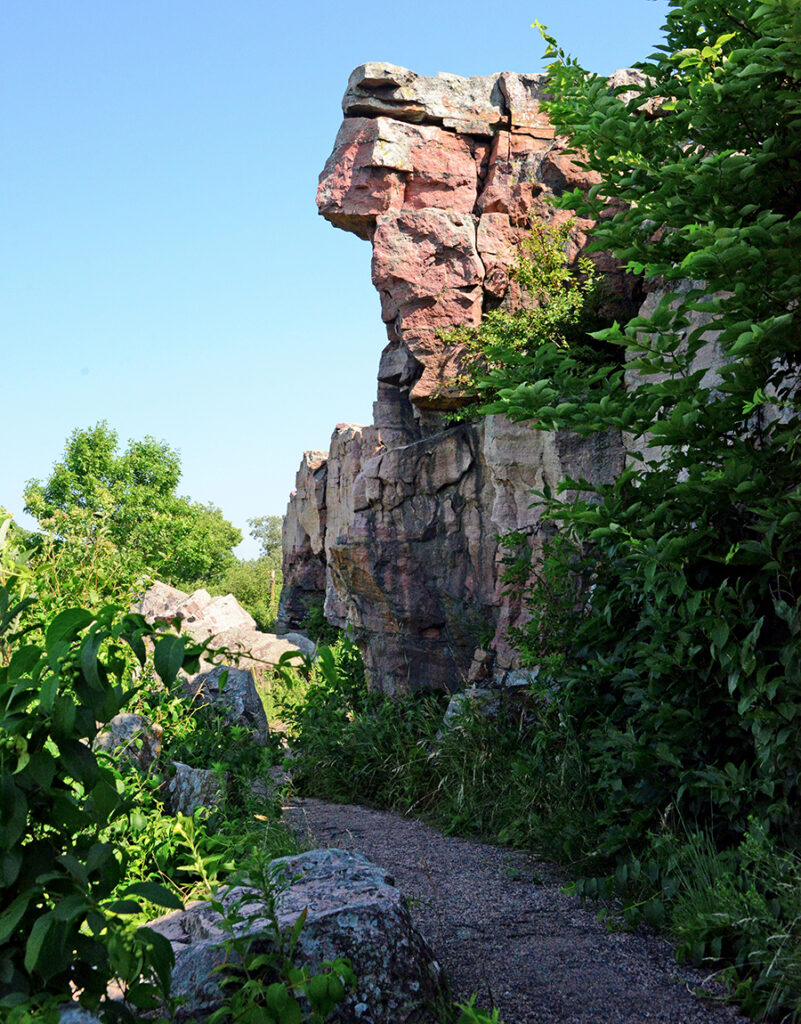
Quartzite cliffs.
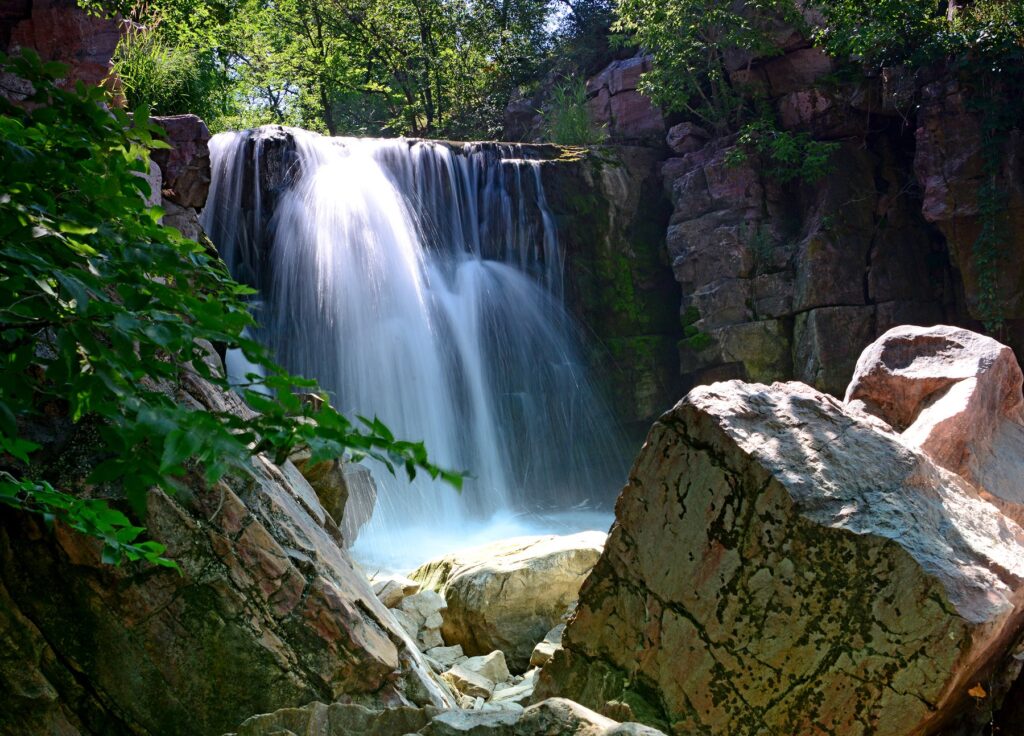
Winniwissa Falls at Pipestone National Monument.
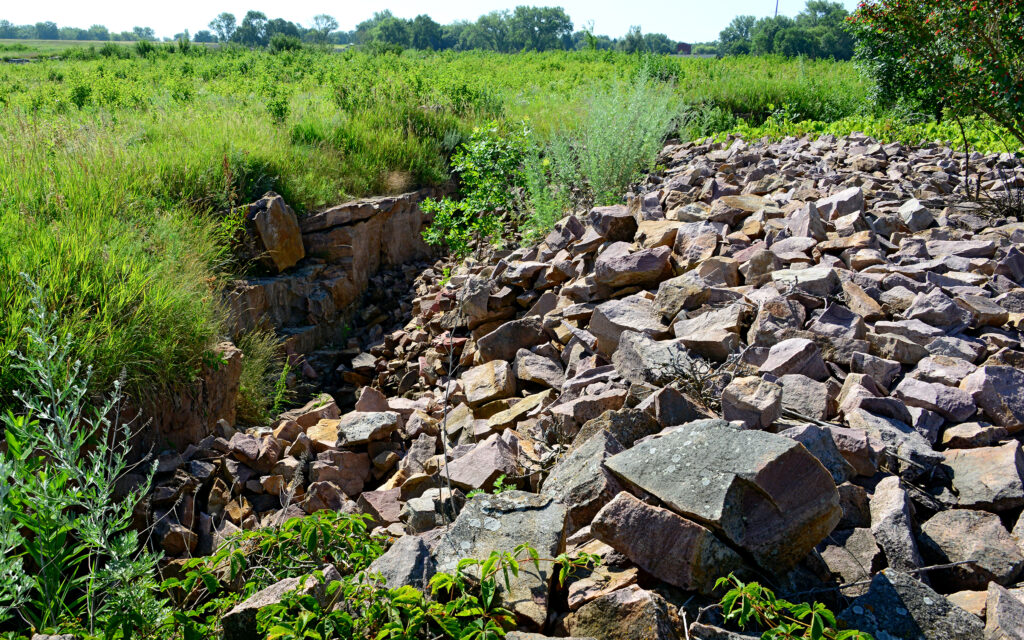
This quarry area shows the rock rubble created to get to the layer of pipestone below.
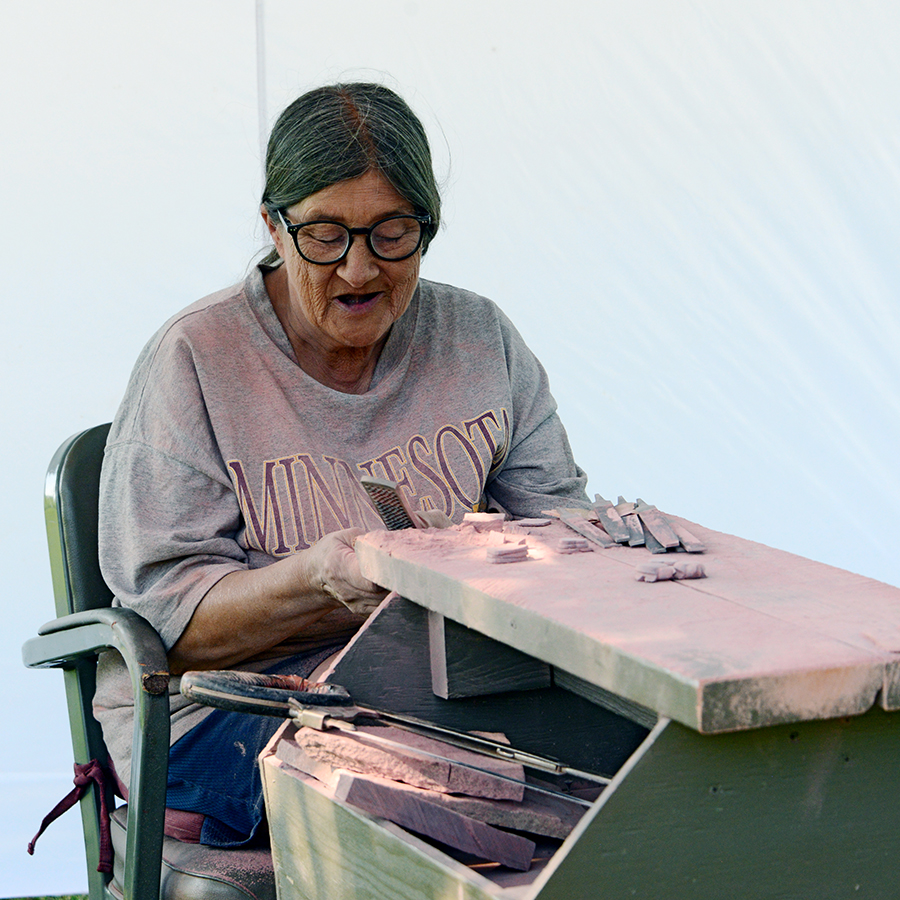
This woman was cutting and shaping small pieces of pipestone. It is easily cut with a hacksaw blade, then filed and sanded into desired shapes.
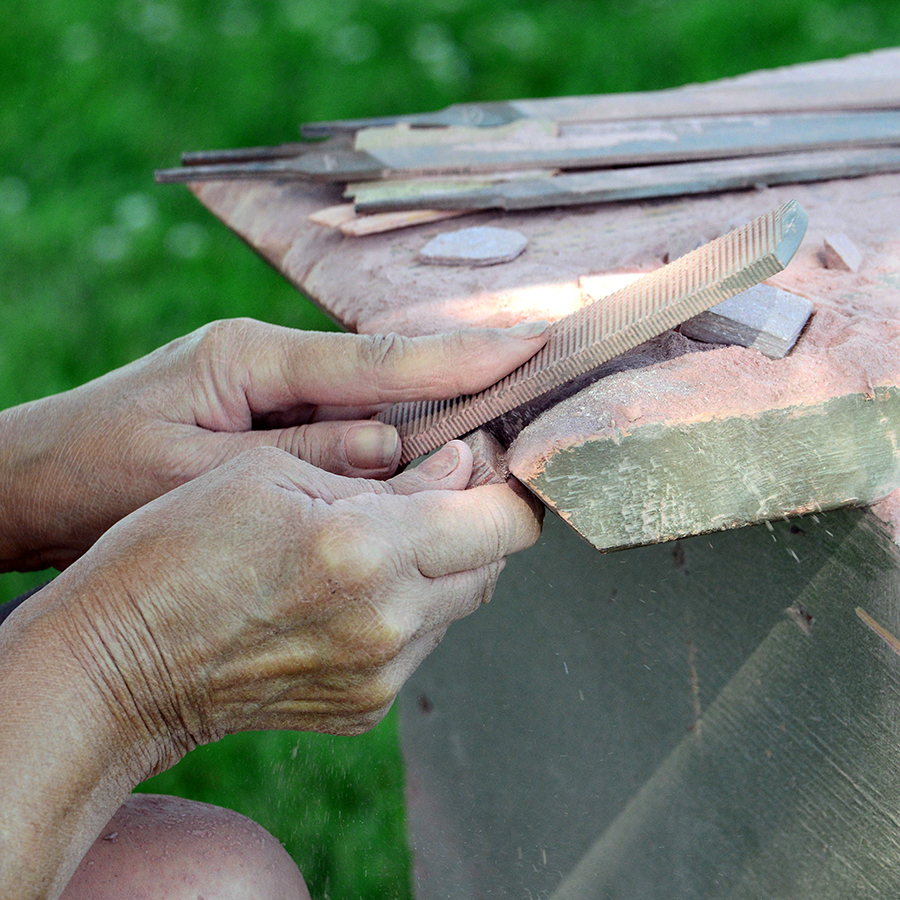
Filing the edge of the soft pipestone.

This internet photo shows how a carved and polished piece of pipestone is turned into the bowl of a peace pipe.
Downtown Pipestone

Giant pipestone peace pipe on display outside Keepers Gift Shop and Gallery operated by the Keepers of the Sacred Tradition of Pipemakers, a Tribal non-profit organization.

These 1890s-era buildings in downtown Pipestone feature the local Sioux Quartzite.

The Pipestone County Museum is another beautiful example of Sioux Quartzite.
My first week at the campground I made friends with my neighbors Pam and Dennis from Princeton, Minnesota. We swapped travel stories around the campfire and Pam provided a list of state parks and other places of interest they’d discovered in the area. She even gave my cats a handmade toy she makes for her own cats.
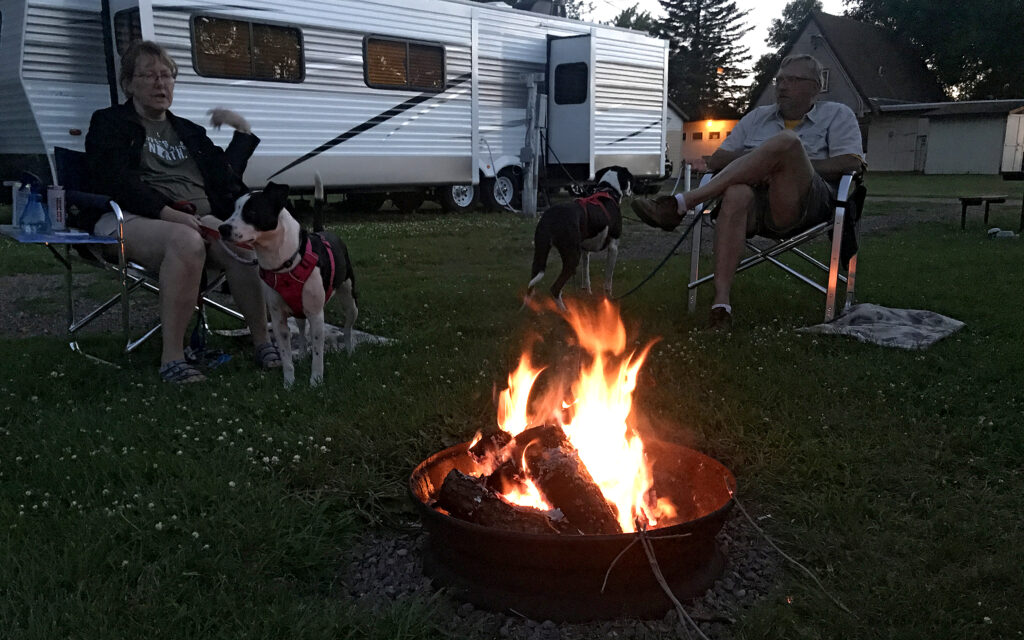
Sharing travel stories around the campfire with my neighbors, Pam and Dennis.

The handmade cat toy Pam gave to my girls.
Blue Mounds State Park
The state of Minnesota has been working at reclaiming what remains of the eastern tallgrass prairie and visitors to Blue Mounds State Park can see great examples of what this region looked like before settlers took over.
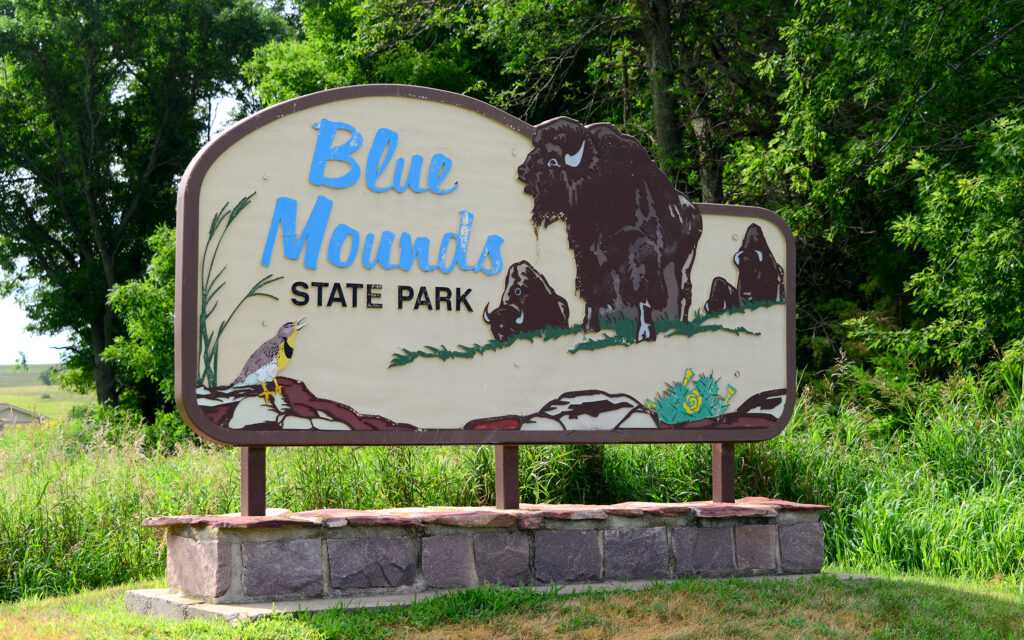

The interpretive center at Blue Mounds State Park was build by author, Frederick Manfred who lived here with his family in the 1960s and 70s. You can see more evidence of the use of Sioux Quartzite.

The park is rebuilding the buffalo herd.

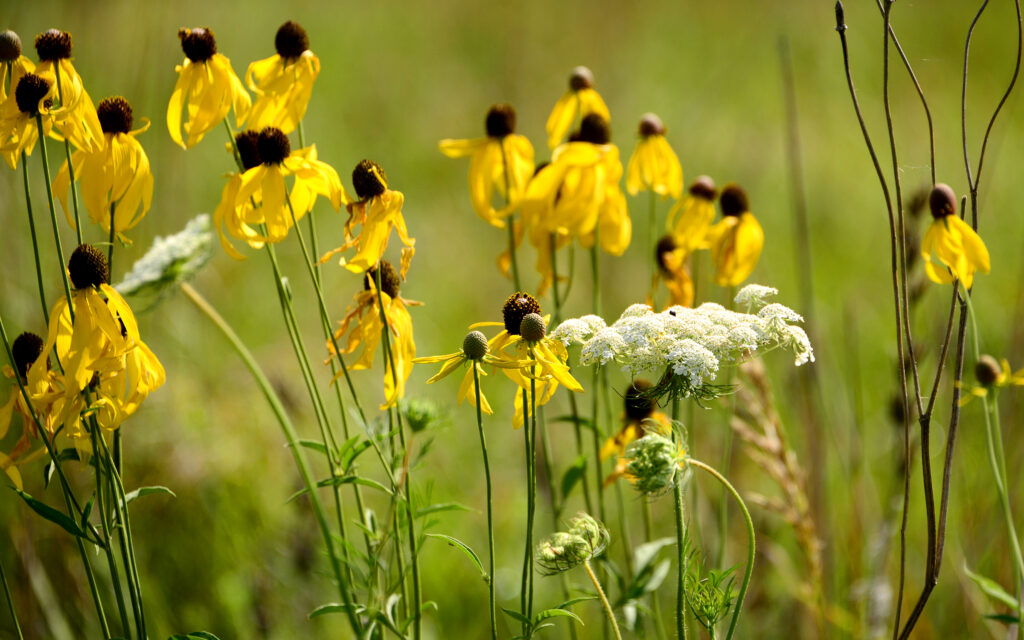

Split Rock Creek State Park
In the 1930s, a dam was built on Split Rock Creek, creating a recreational lake and state park.
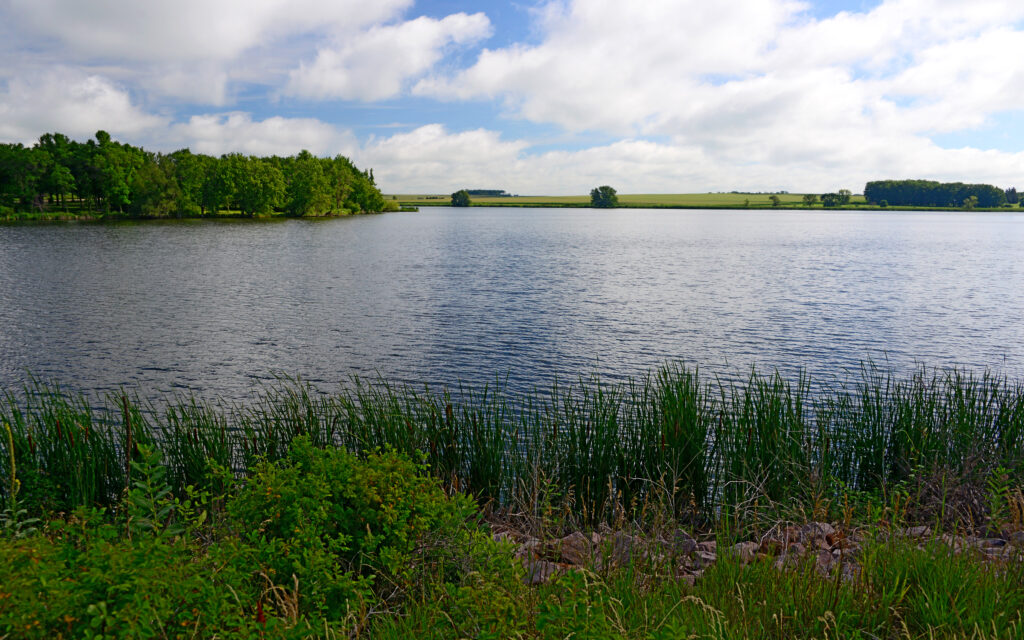
Split Rock Lake.
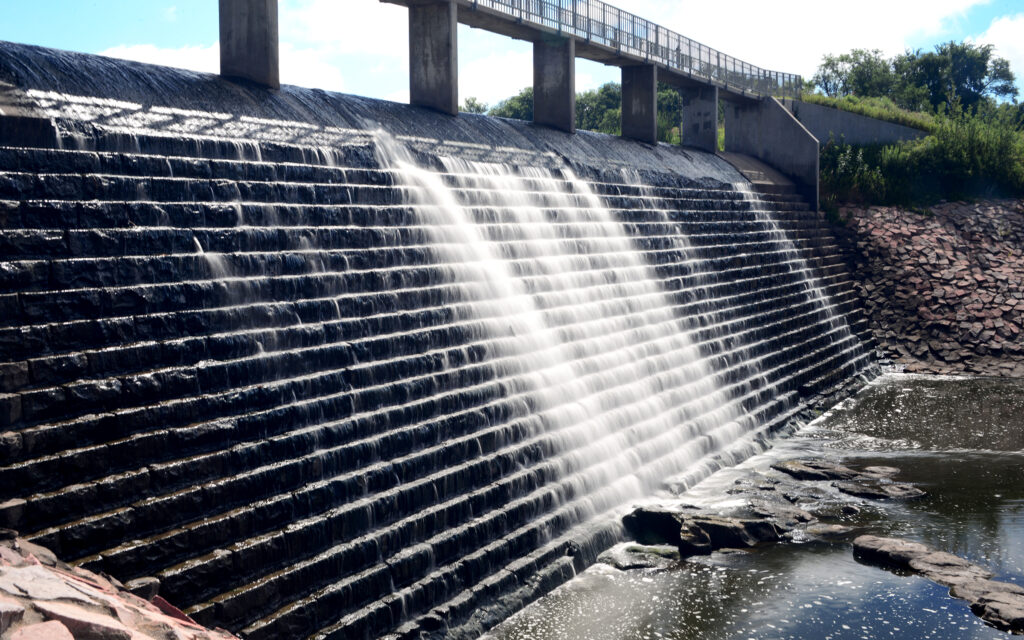
The Split Rock Creek Dam.

The old stone bridge over Split Rock Creek was constructed of Sioux Quartzite so prevalent in the area.
Touch the Sky Tallgrass Prairie
The Touch the Sky Tallgrass Prairie technically covers nearly all of the western edge of Minnesota but finding a public access point for exploration was a challenge that was well worth the effort. This small portion near Hardwick, MN is a beautiful example of the wide open spaces that once graced the Great Plains. There is a wide swath of mowed grass that serves as a hiking trail into the the otherwise inaccessible grass as tall as my hip and in some places, my waist. There’s a wide variety of wildflowers and I enjoyed watching the Meadowlarks flit from place to place. There was also a trail to a small waterfall hidden in the undergrowth.

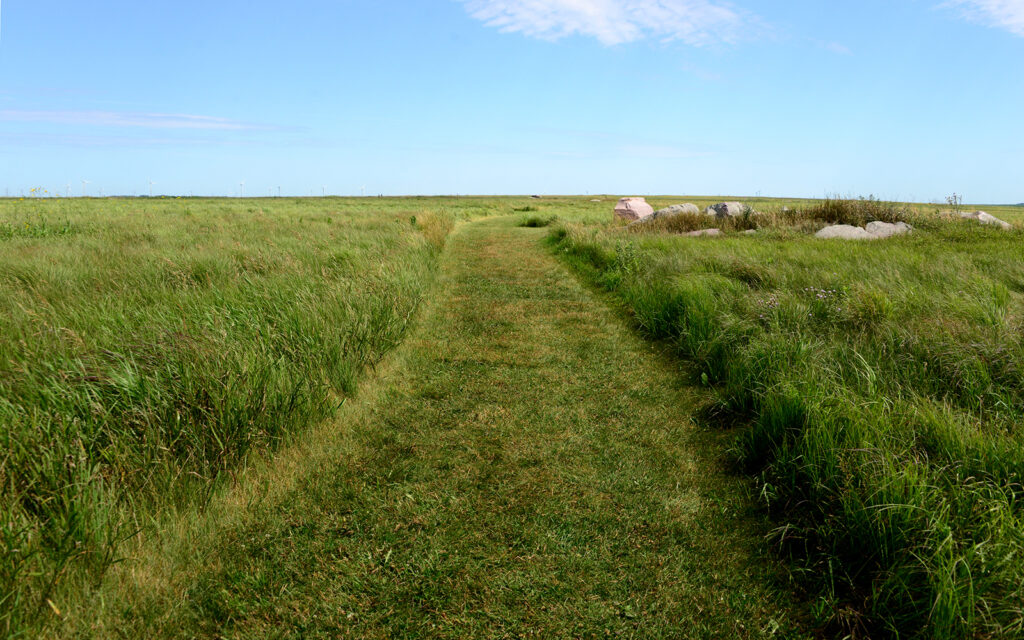
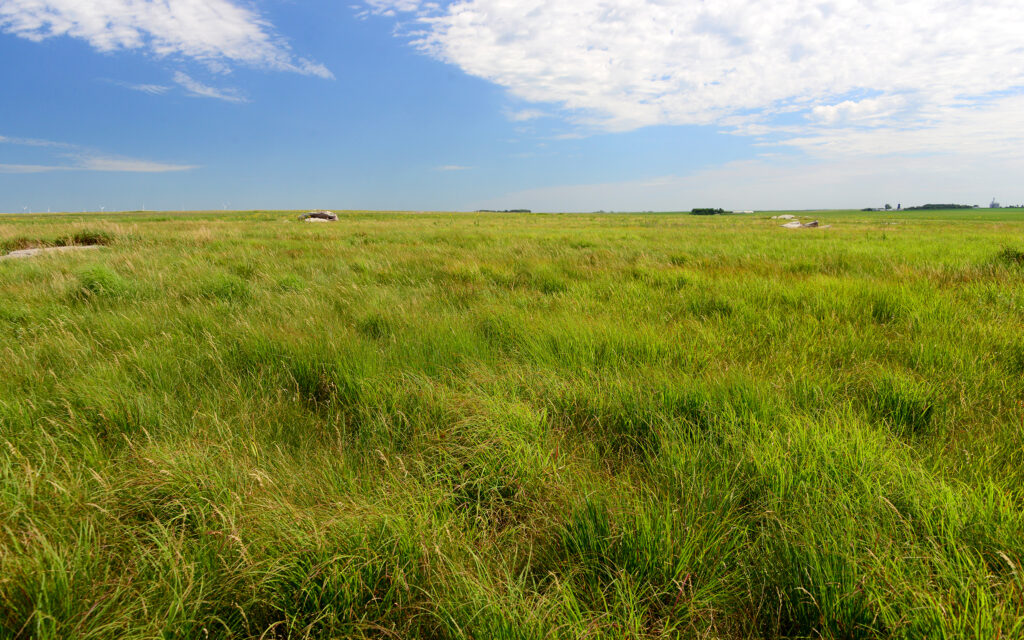
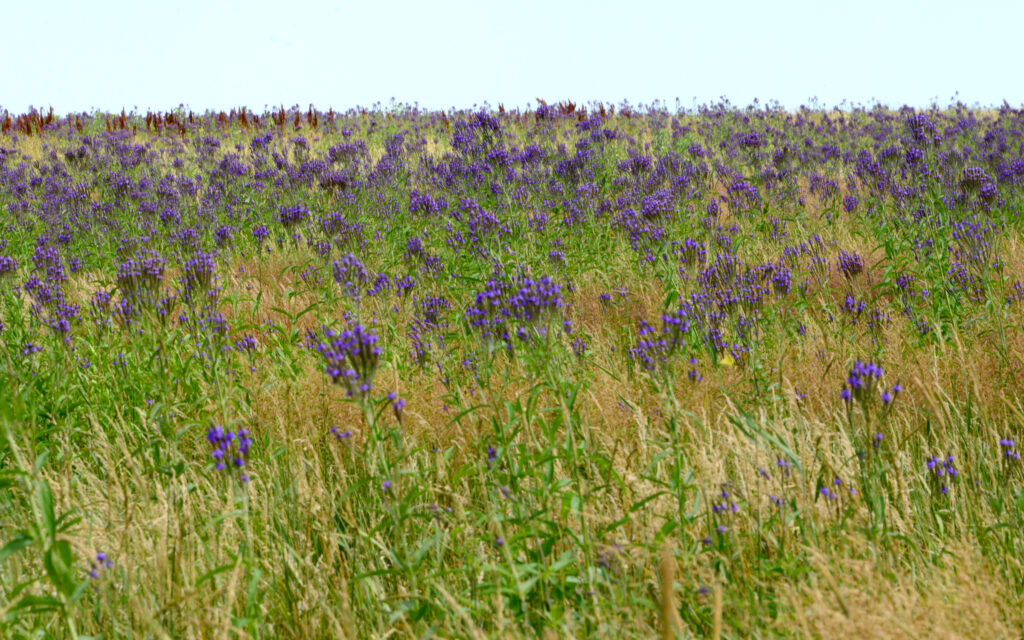

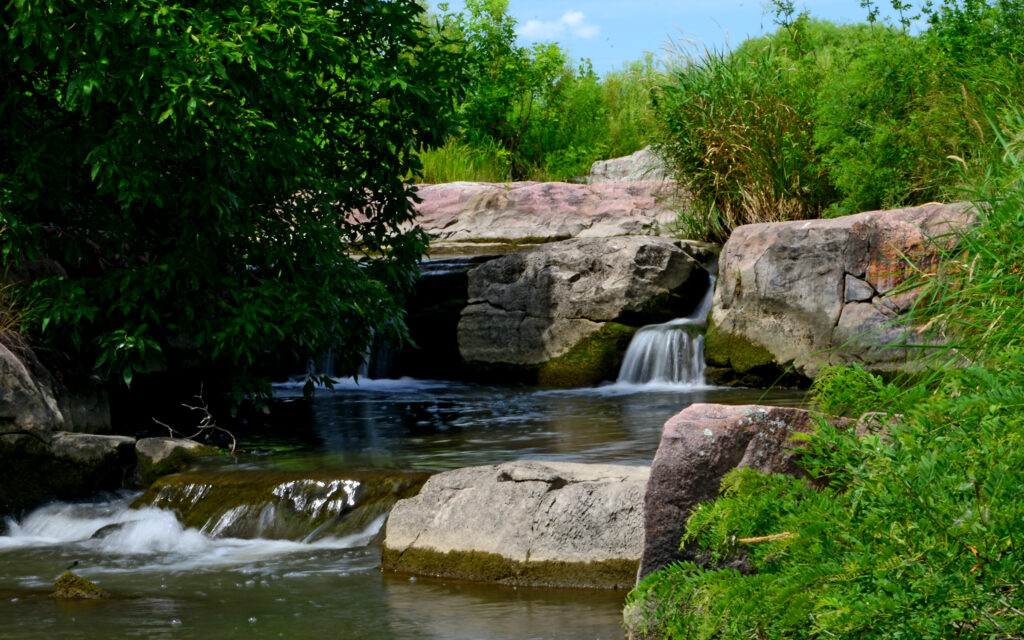
Walnut Grove
An hour’s drive northeast of Pipestone is Walnut Grove, made famous by the “Little House” books written by Laura Ingalls Wilder. Charles Ingalls was never very successful at any of his ventures and moved his family frequently in an effort to scrape out a living. One of their homesteads was a couple miles outside the small town of Walnut Grove. The property is privately owned and visitors must take the home’s driveway around the house, past the barns where there is a donation box and on through a field before arriving at a parking area near the Plum Creek where Charles Ingalls built a dugout to house his growing family until he could build a house. The family lived here less than three years before moving to Iowa then returned a year later for another two-year stay before relocating to South Dakota.
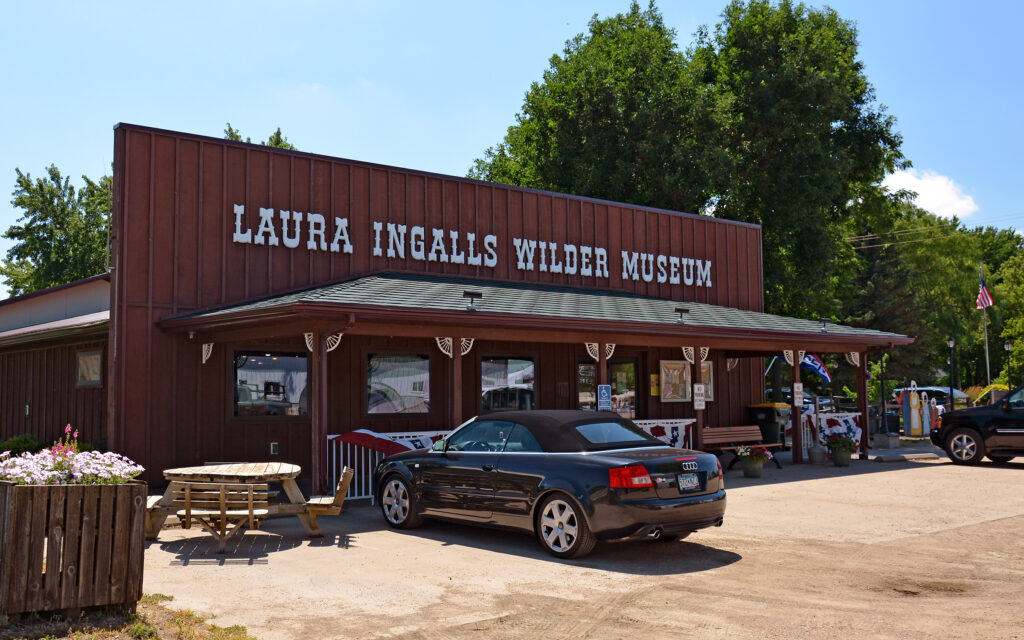
The museum in Walnut Grove tells the history of the Ingalls family and the background for the books written by Laura Ingalls Wilder. There are a few personal family items but mostly there is memorabilia from the hit TV show starring Michael Landon and Melissa Gilbert.

A portrait of Caroline and Charles Ingalls.
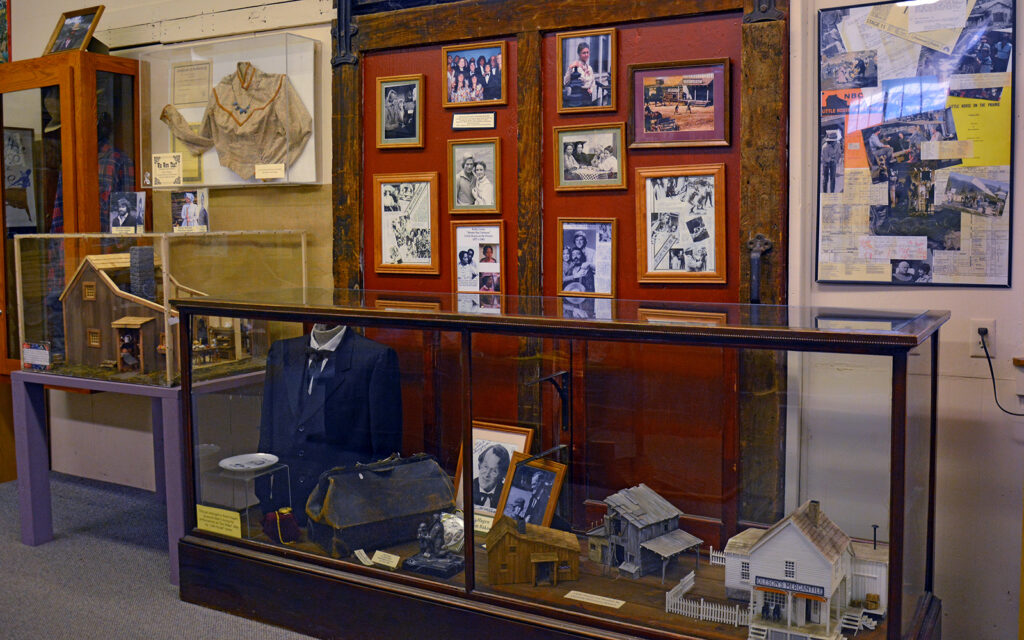
A display of TV memorabilia.
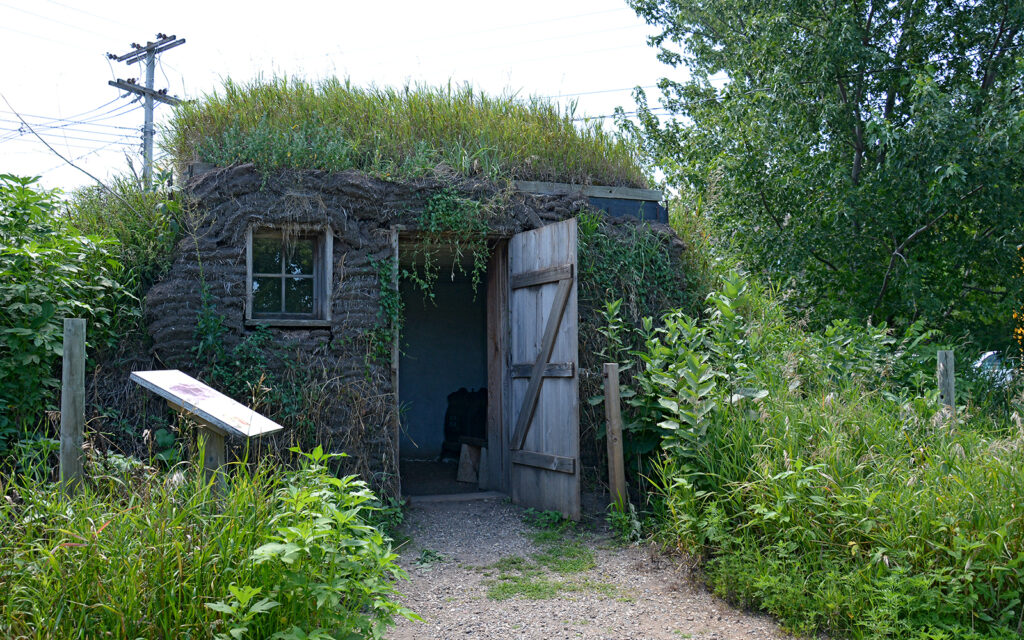
On the grounds of the museum are replicas of buildings that would have been in the town as well as this one of a dugout home that was popular at the time as temporary housing until a proper house could be built. The Ingalls family lived in something similar on the banks of Plum Creek.

Just two miles outside of Walnut Grove is the site of the Ingalls homestead.

Plum Creek was featured prominently in Laura Ingalls Wilder’s books.
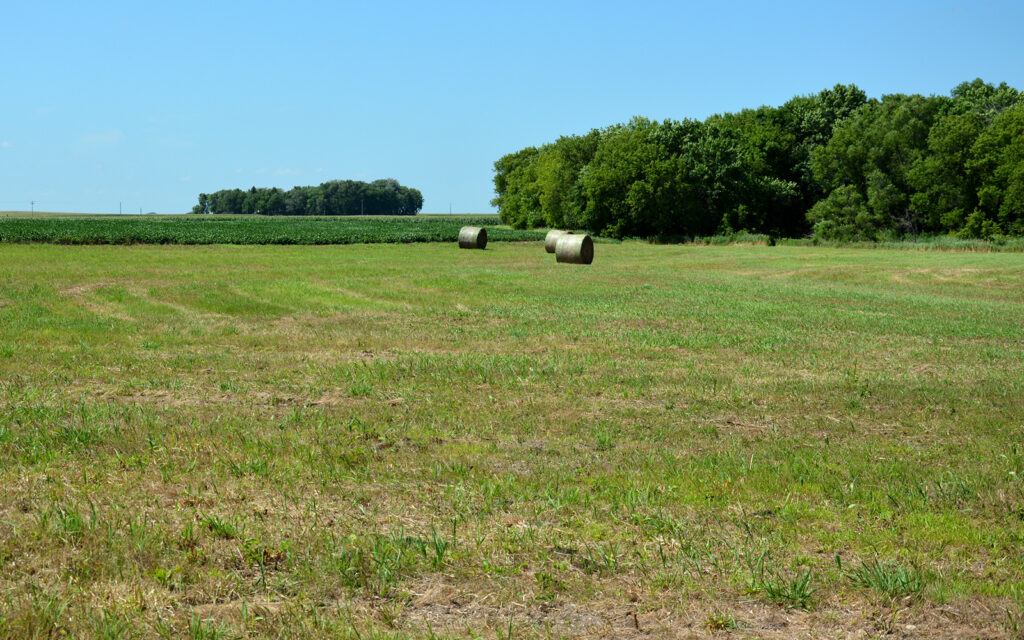
The farmland where Charles Ingalls tried desperately to eke out a living.
ALEXANDRIA
Moving 165 miles north, I arrived at Oak Park Kampground near Alexandria, Minnesota. This was a simple, yet beautiful little campground and if I ever come this way in the future I want site 4 again! The town of Alexandria is quite darling (locals call it simply “Alex”), with shops and restaurants and sits on a large lake. They celebrate their Norse heritage with a large Viking statue and a replica longship at the Rune Stone Museum. Minnesotans believe that Vikings discovered this land as early as 1362 by sailing through Hudson Bay in Canada then along the many rivers and lakes that make up this region.
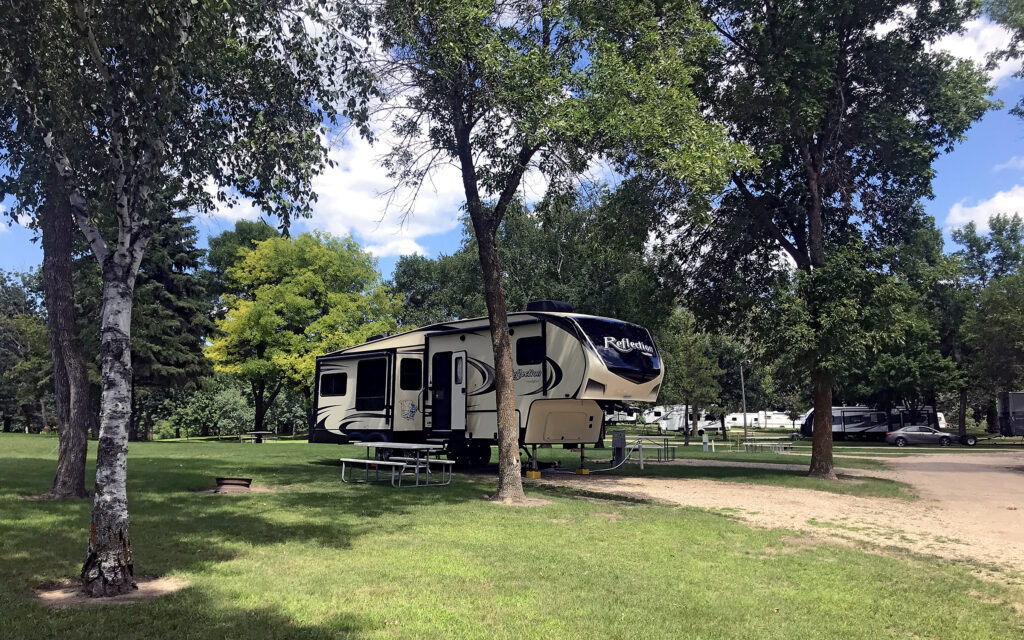
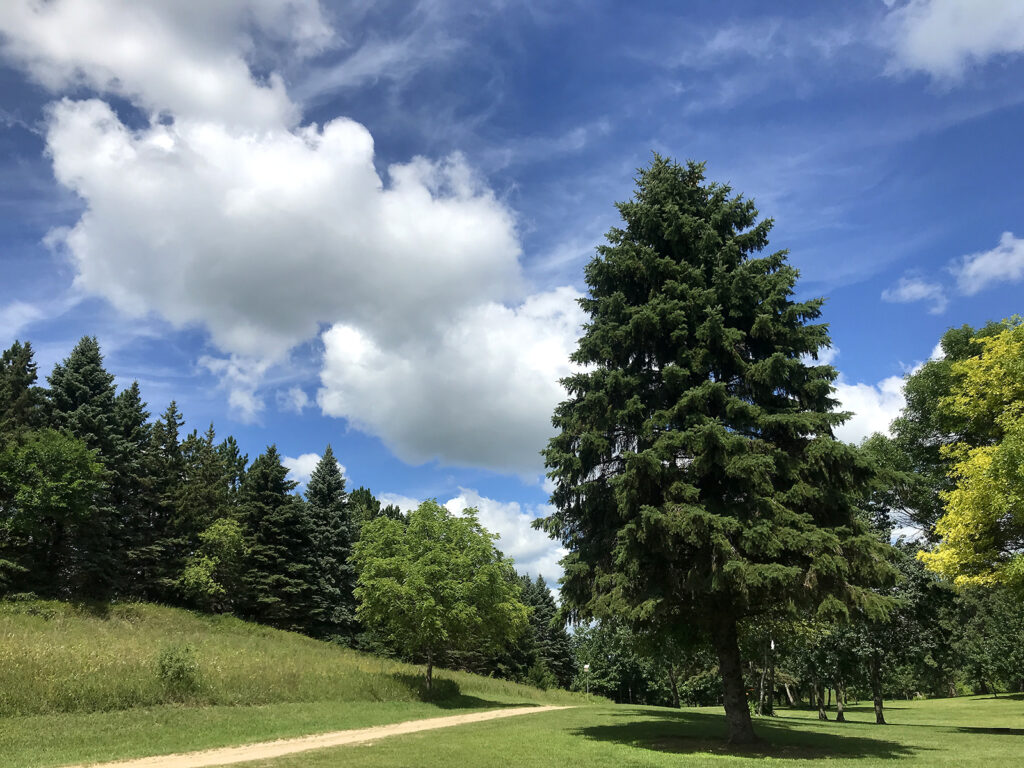
I love to sit outside my trailer and read in the afternoon and the scenery here was idyllic.

“Big Ole” stands in a small park near the edge of Lake Agnes in Alexandria, MN. He’s 28 feet tall and was built for the 1964 World’s Fair in New York.

The Kensington Rune Stone, found in 1898, is said to be ancient text left here by 14th century Scandanavian explorers but its authenticity is still being debated by scholars.

A restored pioneer home at the Rune Stone Museum.

An old covered wagon, minus its canvas.

Display of typical Viking lifestyle from the 1oth century.

My dinner view from the outdoor patio at Depot Express on the lake in Alexandria, MN.
EAST GRAND FORKS
By the end of July, I moved way up north to East Grand Forks. The Red River of the North creates the border with North Dakota with Grand Forks, ND on the left bank. This area has a long history of catastrophic flooding and in the 1997 flood they experienced the highest flood waters in the town’s history, cresting at 54 feet. It wiped out most of the homes and businesses on the Minnesota side of the river and afterwards the state rebuilt higher levees and turned the land on both banks into parks. One piece of land became Red River State Recreation Area, which included a nice campground with full hook-up sites for RVs and that’s where I stayed.
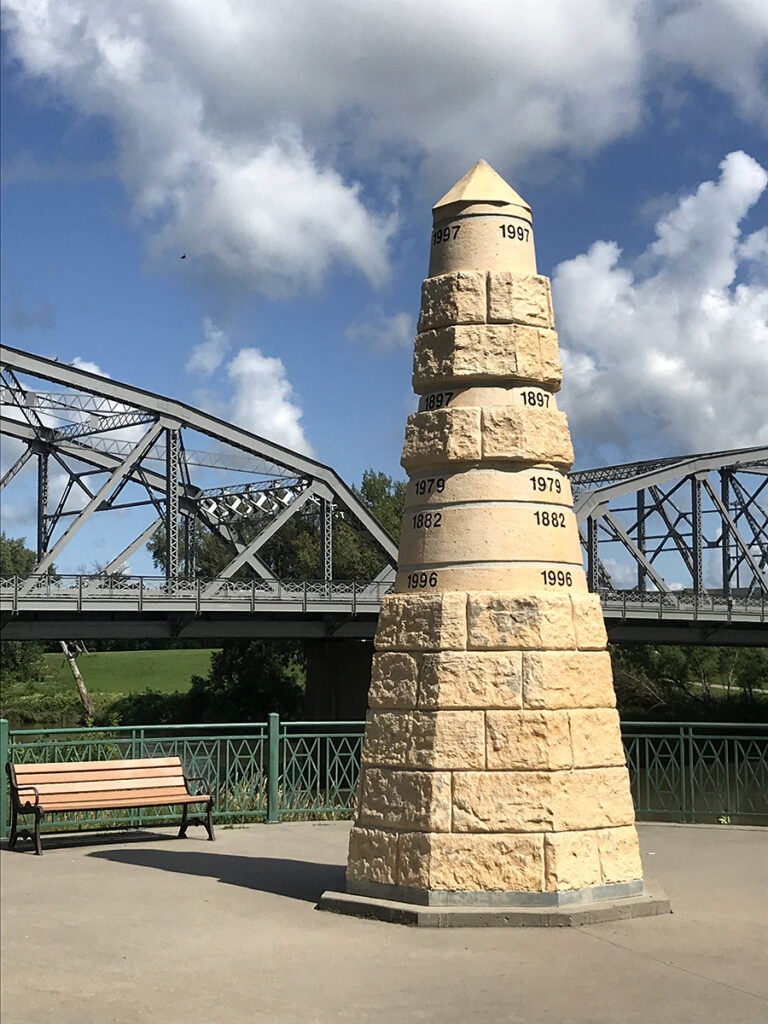
This marker indicates the different flood heights the sister cities of Grand Forks and East Grand Forks have suffered. The 1997 floodwaters covered the deck of the bridge in the background.

My campsite at Red River State Recreation Area was very nice except that being so close to the river, the mosquitoes were epic.
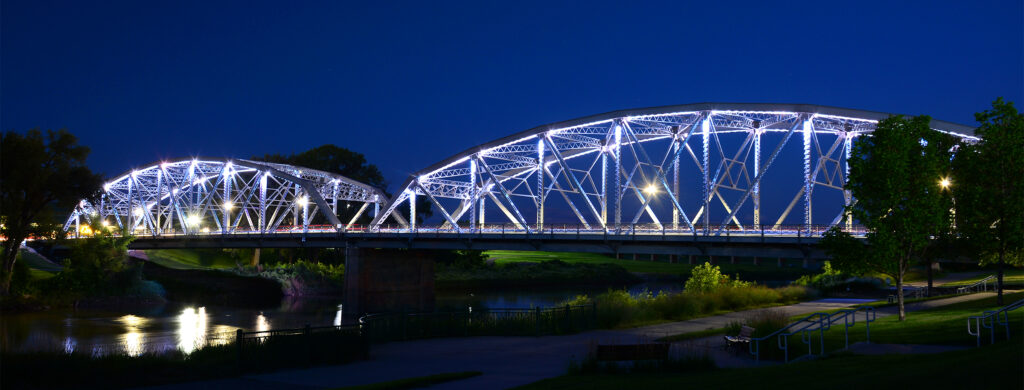
The Sorlie Memorial Bridge lit up at night.
Mississippi Headwaters
I took a day trip to Itasca State Park and the headwaters of the Mississippi River. Here, in Northern Minnesota, Lake Itasca drains into a small stream, which remarkably, is the birth of the Mighty Mississippi. Having seen the river at numerous locations and even sailed its southern end on a cruise ship, its hard to believe this is where it all begins.

After 4 1/2 months of Coronavirus shutdowns, this was the most crowded place I had experienced.


This rather unassuming spillway and shallow stream is the exact point where the Mississippi River starts and is a popular swimming spot.

This unassuming stream will eventually become the second longest river in North America.
Bemidji
From here, I visited the town of Bemidji and the famous statues of Paul Buyan and Babe the Blue Ox. This is not the only town in America that lays claim to the fabled duo but it’s probably the best known.
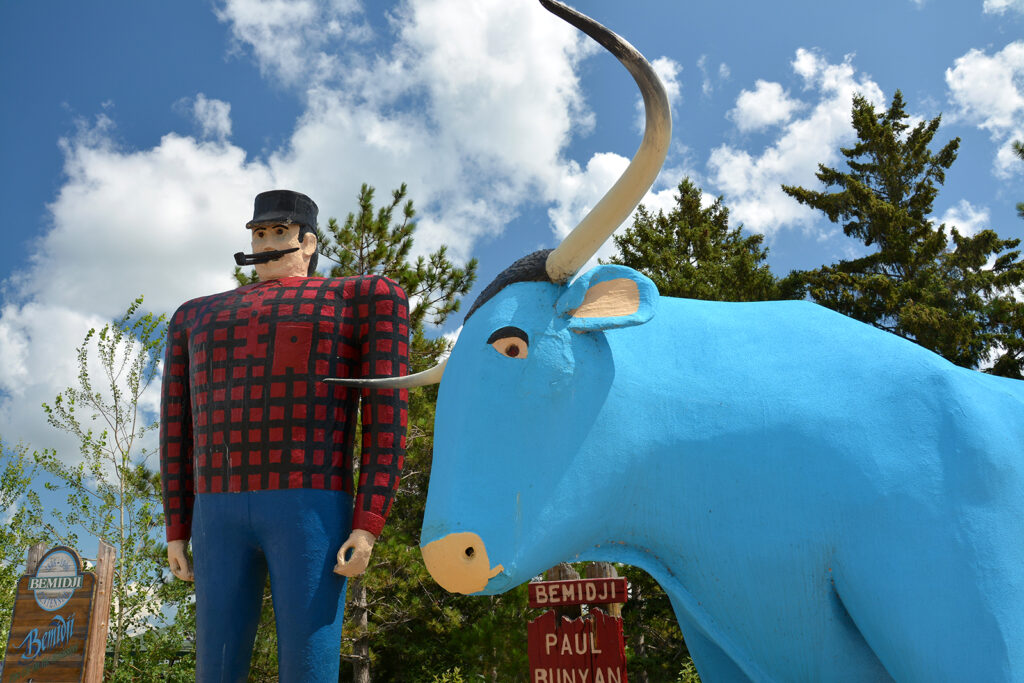
Paul Bunyan and Babe the Blue Ox.
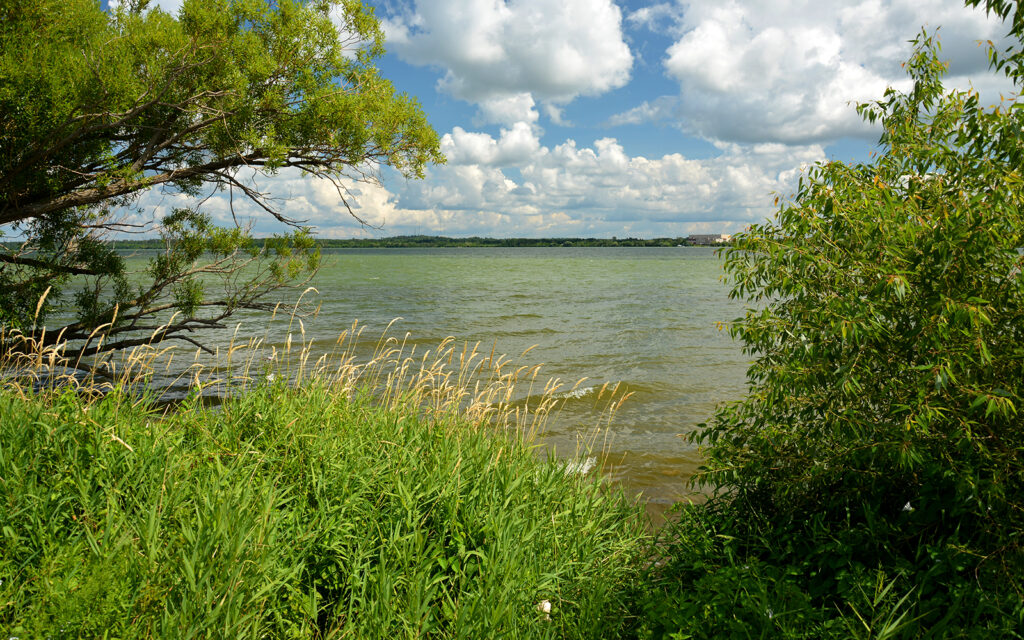
Lake Bemidji.

Another crazy Minnesota sky on my drive back to East Grand Forks.

My 580-mile drive from Omaha, Nebraska to East Grand Forks, Minnesota.
Next post: North Dakota and Eastern Montana.

My name is Lindsay Reed and I’m a photographer and retired graphic artist with a passion for both lighthouses and road trips. I am living as a full-time solo RVer in my 33 foot Grand Design Reflection Fifth Wheel trailer and plan to spend the next few years traveling the U.S. and Canada photographing not only lighthouses, but everything else there is to see in this wonderful land. I hope you enjoy my blog and will follow my adventures in the months and years ahead.
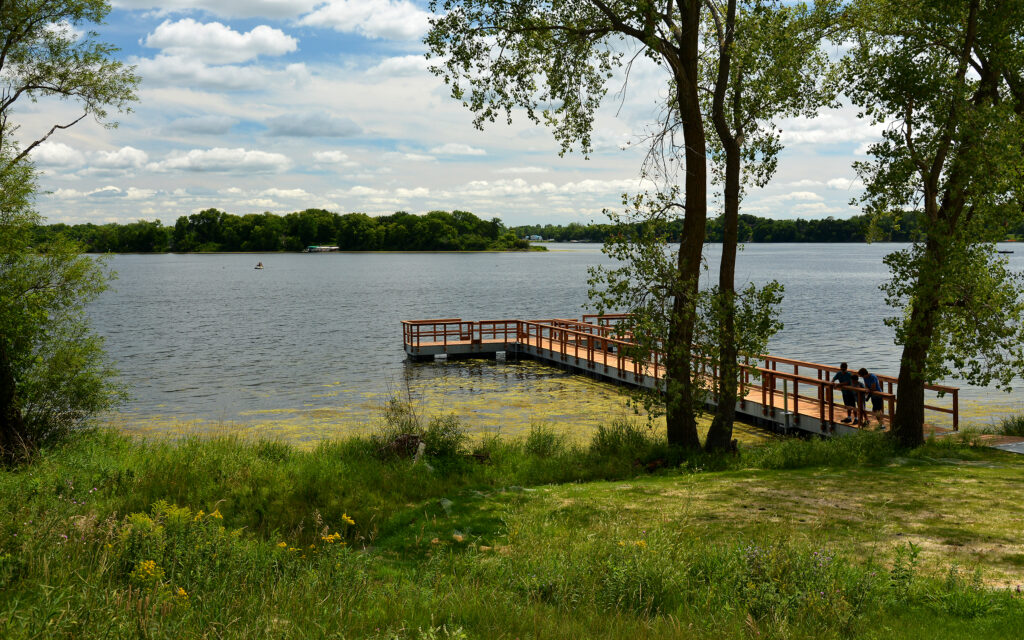
One thought on “Minnesota”
Wow – what a beautiful sights you’ve encountered and captured. It’s hard to pick a favorite (except for yours at the very end). The most dramatic image, though, was the one of the Minnesota sky!
You must be having the time of your life!